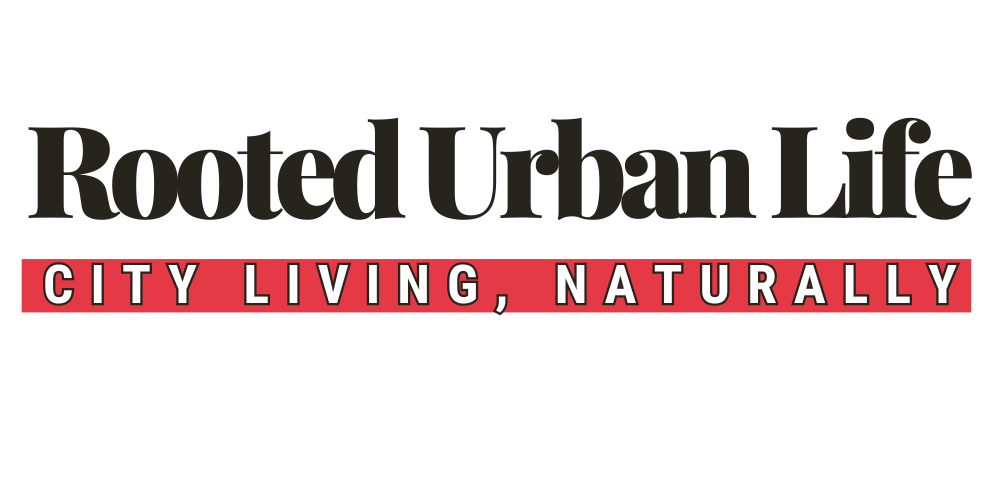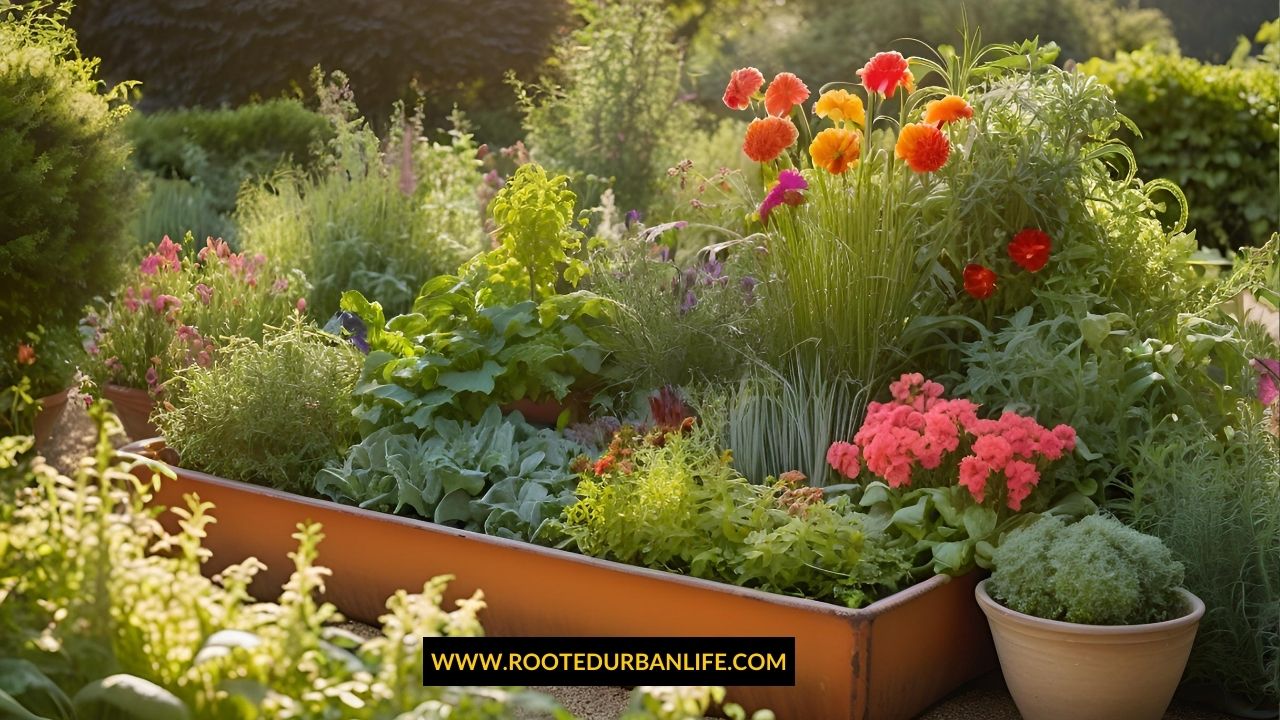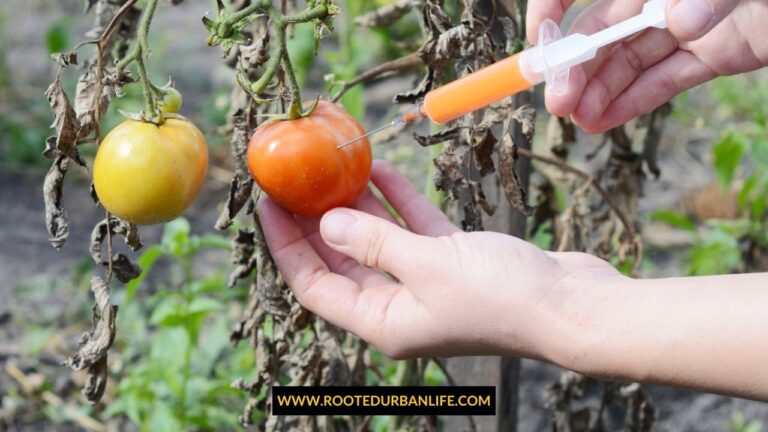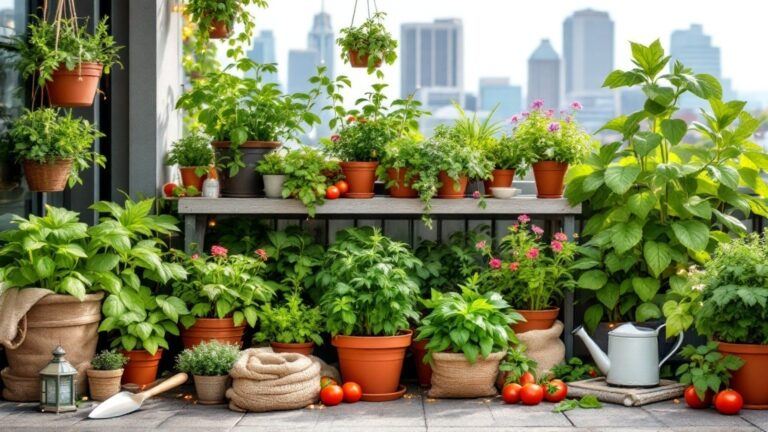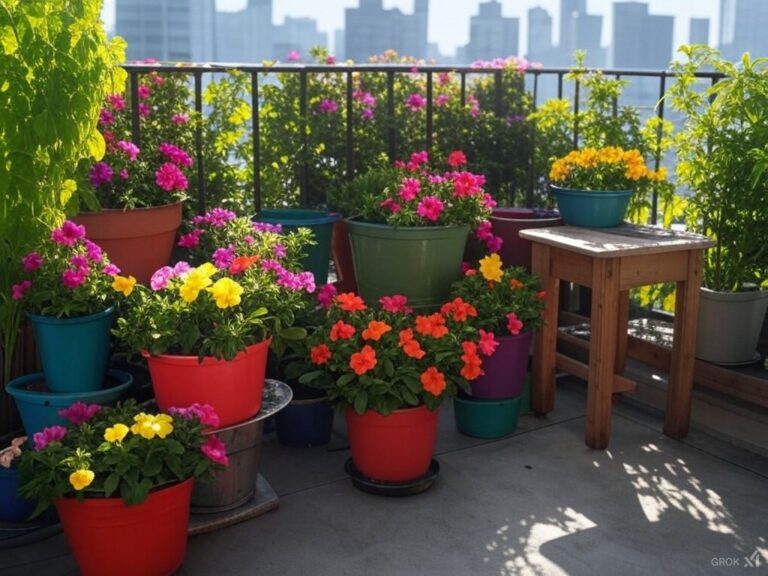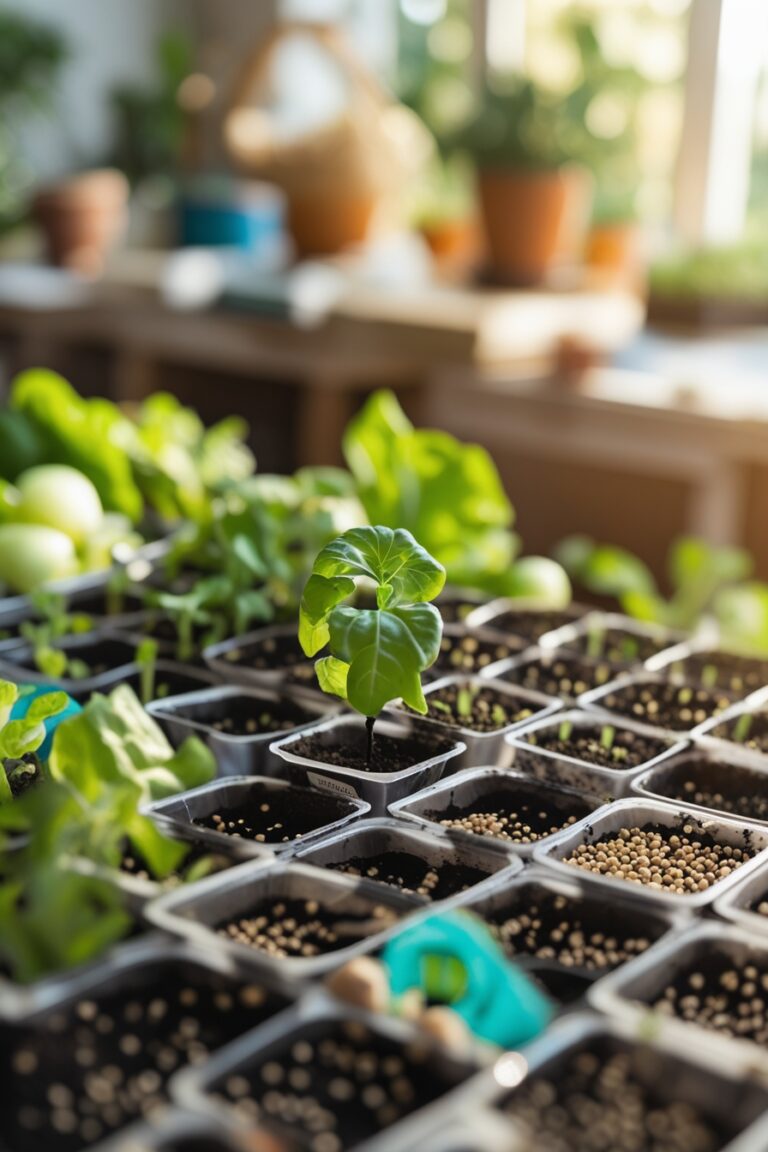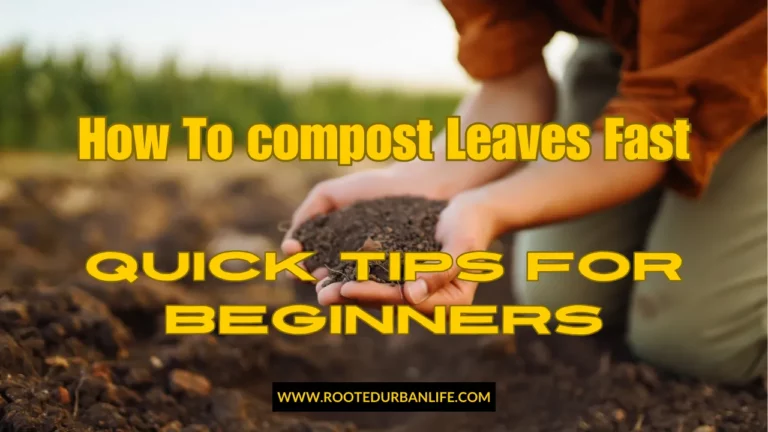Why Your Container Plants Are Dying: The Secret Soil Mistake You’re Making!
Discover How the Wrong Soil Mix Can Kill Your Plants.
The Problems This Will Cover:
- Compacted Soil: Hinders root growth and leads to poor plant health.
- Poor Drainage: Causes root rot due to excessive water retention.
- Lack of Nutrients: Leads to stunted growth and weak plants.
- Incorrect pH: Affects nutrient uptake, potentially harming plant health.
What You Will Learn:
- The difference between garden soil and potting mix, and why potting mix is superior for containers.
- Key components like perlite, vermiculite, and organic matter that make a soil mix ideal for container plants.
- How to customize soil mix based on different plant types (succulents vs. tropical plants).
- The importance of pH balance and how to adjust it for optimal plant health.
- Techniques to ensure proper aeration and drainage to prevent common issues like root rot.
Choosing the right soil mix for container plants is key to their success. Look for a mix that’s lightweight, well-draining, and rich in nutrients. Customize your soil based on plant needs to ensure healthy growth and prevent issues like root rot. Focus on organic matter, aeration, and moisture balance for the best results. Read on to discover how to choose the perfect soil mix for your plants!
Difference Between Garden Soil and Potting Mix
Garden soil is made for planting in the ground. It often contains a mix of silt, sand, and clay. This mix can compact, which makes it hard for roots to grow. It may also carry pests and diseases.
Potting mix, on the other hand, is specially formulated for containers. It usually includes organic matter, such as compost or peat moss, to improve nutrient content. Additionally, it has materials like perlite or vermiculite to enhance drainage. These components help create a light, loose texture that allows roots to spread easily.
Components of a Good Container Mix
A good container soil mix contains several important components.
Organic Matter: This includes compost, peat moss, or well-rotted manure. It provides essential nutrients for plants.
Aeration Agents: Perlite or vermiculite improves drainage and aeration, preventing roots from sitting in water.
Inorganic Matter: Sand helps with drainage, while silt retains some moisture and nutrients. A balance of these ensures a healthy environment for roots.
Soil Types: A mix of loam, which is balanced in sand, silt, and clay, is ideal. Loamy mixes hold moisture without becoming too heavy.
The right mix supports healthy growth and reduces plant stress.
Choosing the right soil mix for your container plants is essential for healthy growth. The ideal mix will provide good drainage, proper nutrients, and the right pH balance. Here are the key features to consider when selecting or customizing your soil.
Ideal Soil Mix Features for Containers
The best soil for container gardening should have several important features. First, it needs to hold moisture while still allowing excess water to drain. Mixes that contain peat moss or coir are great for this.
Another key feature is aeration. A good soil mix allows roots to breathe. Incorporating materials like perlite or vermiculite can enhance aeration.
Using organic potting soil is beneficial too. It contains natural nutrients crucial for plant health. Look for mixes labeled as soilless if you prefer lighter options.
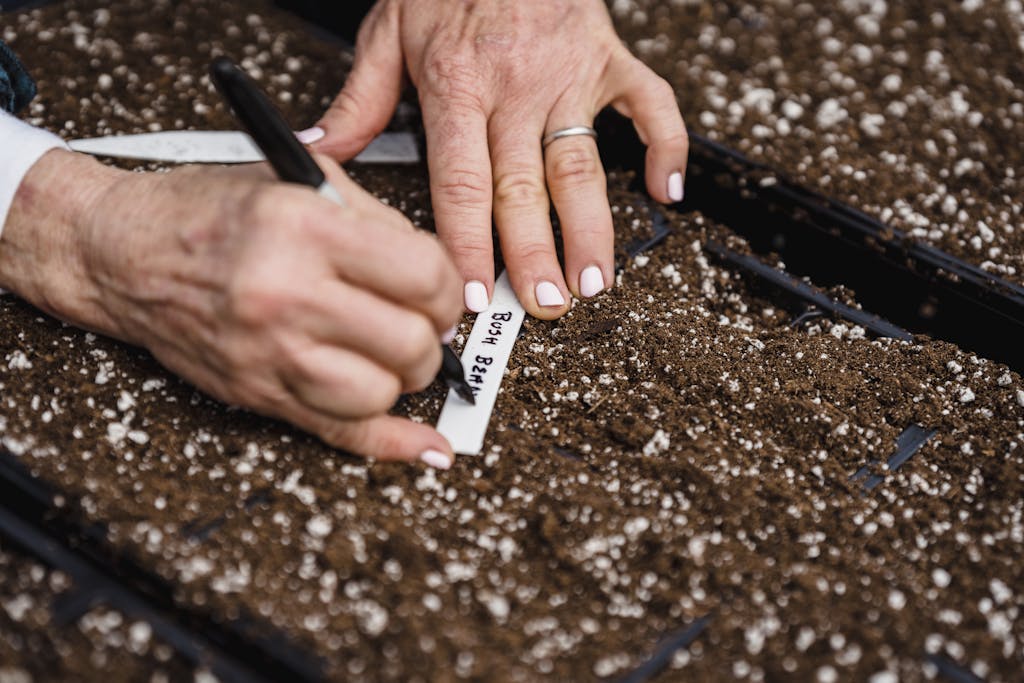
Customizing Your Mix For Success
Key Components for a Healthy Soil Mix:
- Organic Matter: Compost, peat moss, or well-rotted manure for nutrient supply.
- Aeration Agents: Perlite or vermiculite for air circulation around roots.
- Inorganic Matter: Sand for drainage, balanced with silt for moisture retention.
Tailor Your Mix:Different plants have unique needs. Succulents? Add more sand or perlite. Tropical plants? Boost with peat moss or coir.
Soil pH and Nutrients: The Balancing Act
Most container plants love a soil pH between 6.0 and 7.0. Test your soil and adjust with lime or sulfur if needed. Ensure your mix has balanced nutrients by looking for added fertilizers or rich organic matter.
Prevent Water-Related Woes
- Ensure Good Drainage: Use pots with drainage holes and mix in materials like perlite or bark.
- Balance Moisture: Combine moisture-retention elements like coir with drainage agents.
Enhance Your Soil for Every Plants Needs
Perfect soil isn’t just about what you start with; it’s about what you add to meet the specific needs of your plants. Here’s how to customize your soil mix:
- Aeration Agents:
- Perlite or Vermiculite: These materials are like the lungs of your soil, allowing roots to breathe. They prevent waterlogging, which is crucial for plant health.
- Organic Matter:
- Compost or Peat Moss: They enrich the soil with nutrients and improve its structure. Compost is especially beneficial for its slow-release nutrient properties.
- Moisture Balance:
- Coir or Peat: Great for retaining moisture without making the soil too soggy. Ideal for plants that love a bit more hydration.
- Drainage Boosters:
- Sand or Fine Bark: For plants like succulents or cacti that prefer a drier environment, these ensure water moves through the soil quickly.
Customizing for Different Plants:
- Succulents and Cacti: Add more sand or perlite for a drier, well-draining mix.
- Tropical Plants: Increase peat moss or coir for a moisture-rich environment.
Remember: The right balance prevents common issues like root rot and promotes vigorous growth. Test and adjust your mix as you learn what your plants love.
Perfect Your Soil Now!
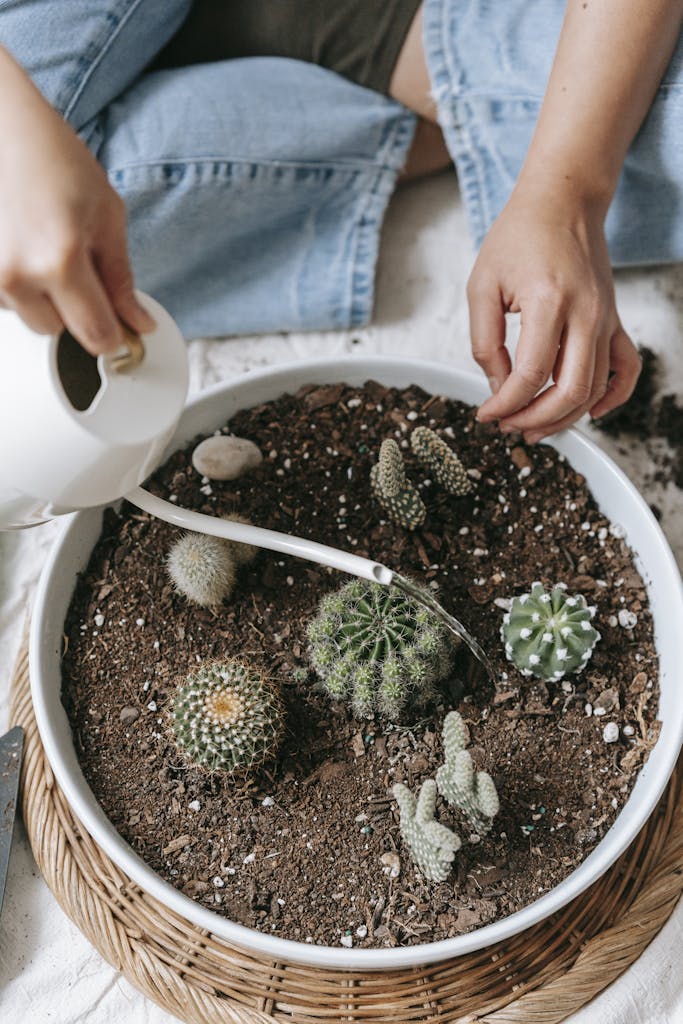
Master the Art of Water Balance for Thriving Plants
Achieving the perfect moisture level in your container garden is an art. Here’s how to balance water retention with proper drainage:
- Moisture Retention: Use coconut coir or peat moss to hold water without waterlogging. These materials help maintain consistent moisture levels.
- Drainage: Incorporate perlite or coarse sand to ensure excess water drains away from roots, preventing water stagnation.
Your Mix: Aim for a blend of 40% potting soil, 30% coconut coir, and 30% perlite or sand. This combination allows your plants to drink just enough, not too much.
Find Your Water Balance Affiliate LINK
Say Goodbye to Root Rot: Your Water Management Guide
Root rot is the silent killer of container plants, but it’s preventable:
- Drainage Holes: Ensure your containers have holes to let excess water escape.
- Soil Check: Stick your finger into the soil; if it’s dry an inch down, it’s time to water.
- Avoid Overwatering: Use a mix that doesn’t retain too much water, like reducing peat if it’s causing issues.
Preventive Action: Monitor your plants and soil. If you see yellow leaves or soggy soil, adjust your watering habits or soil mix.
Combat Root Rot Today AFFILIATE LINK
Nourish Your Plants with Nature’s Best: Organic Soil Enrichment
Organic matter isn’t just about feeding your plants; it’s about creating a living soil ecosystem:
- Kelp, Peat Moss, Leaf Mold: These organic materials slowly release nutrients, improving soil structure and retention.
- Slow-Release Fertilizer: For a steady supply of nutrients, consider adding this to your mix.
Your Approach: Mix these organic components with your potting soil for a nourishing environment that supports robust plant growth.
Start Enriching Your Soil (#cta) AFFILIATE LINK
Unlock Soil Magic with Compost and Worm Castings
Harness the power of nature’s recyclers:
- Compost: This decomposed organic matter is a goldmine of nutrients, improving soil structure, and moisture retention.
- Worm Castings: They’re like superfood for your soil, adding beneficial microbes, slow-release nutrients, and enhancing soil fertility.
The Benefits: Using these in your soil mix leads to healthier, more resilient plants with better yields and blooms.
Why Wait? Turn your garden into a thriving ecosystem by integrating compost and worm castings into your soil strategy.
Discover More on Composting (#cta) AFFILIATE LINK
Frequently Asked Questions
This section addresses common questions about soil mixes for container plants. You will find information on ideal mixtures, ingredients, and the differences in products available.
What is the ideal potting mixture for most plants?
A mix of peat moss or coconut coir, perlite, and compost in equal parts offers excellent drainage and nutrition.
How does one create a container garden soil mix?
Combine three parts compost, two parts peat moss, and one part perlite. Adjust based on plant type.
What are the best ingredients to include in a soil mix for large planters?
Include compost, peat moss, vermiculite, and consider adding slow-release fertilizers.
Potting soil vs. potting mix?
Potting mix is soilless with better drainage for containers, while potting soil might include ground soil.
What is the best soil mix for vegetable gardening in containers?
Choose a nutrient-rich mix with good drainage, often labeled for vegetables.
Store-bought vs. custom mix?
Store-bought can be good, but custom mixes cater to specific plant needs.
Key Takeaways
Choose the right soil mix: Look for mixes that are lightweight, well-draining, and nutrient-rich to support healthy plant growth. Understand plant needs: Different plants require different soil compositions—customize your mix accordingly (e.g., more sand for succulents, more peat for tropical plants). Focus on aeration and moisture balance: Use materials like perlite or vermiculite to improve drainage and aeration, while coconut coir and peat moss help retain moisture. Check the pH balance: Most plants thrive in soil with a pH between 6.0 and 7.0. Adjust as needed to ensure optimal growth.
Ready to Level Up Your Container Gardening?
Choosing the right soil mix is your ticket to vibrant, healthy plants. Armed with this knowledge, you’re now ready to experiment with creating or selecting the best soil for your container garden.
Explore Our Soil Mix Products (#cta) AFFILIATE LINK
Share your soil mix success stories or ask for advice in the comments below!

